 W
WBetal is a popular folk deity in Goa, Sindhudurg district of Maharashtra and Karwar of Karnataka in India. Images of Betal are naked with an emaciated belly; most sculptures of Betal have a sword in one hand and a bowl in another. Betal is also known as Vetoba in the Konkan area of Maharashtra and Goa, and in the Sindhudurg district.
 W
WShri Chitrapur Math is the central math for the Chitrapur Saraswat Brahmin sect and for Smartist Gaud Saraswat Brahmin Samaj. This Math is located at Shirali in the Bhatkal Taluk in North Kanara district of Karnataka and has been there since 1757. The other Maths of this community are located in Gokarna, Karla, Mangalore and Mallapur. All the Maths have the insignia of the saffron flag as shown right, below.
 W
WGangadhar Vithoba Chittal (1923–1987) was a Kannada poet and recipient of Karnataka Sahitya Academy award. He was the elder brother of Kannada writer Yashwant Vithoba Chittal.He held several administrative positions for the Government of India and audited several Indian Embassies and Consulates. During the Quit India struggle (1942), Chittal amongst several others was debarred from his college due to his participation in the Quit India movement.
 W
WChorão, also known as Choddnnem or Chodan, is an island along the Mandovi River near Ilhas, Goa, India. It is the largest among other 17 islands of Goa. It is located 5 kilometres away from the state capital, the city of Panaji and 10 kilometres away from the city of Mapusa.
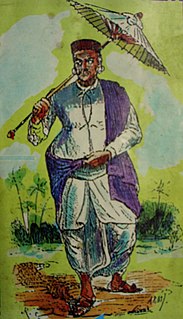 W
WThe Daivadnya Brahmins are a Konkani people and a subgroup of the Hindu Brahmin native to the Konkan, predominantly residing in Goa and Damaon, Canara, coastal Maharashtra, and Kerala.
 W
WMsgr Sebastião Rodolfo Dalgado was an Indo-Portuguese Catholic priest, academic, university professor, theologian, orientalist and linguist.
 W
WDoutrina Christam em Lingoa Bramana Canarim, commonly known as Doutrina Christam or Dovtrina Christam, was written by Fr. Thomas Stephens (1549–1619), an English Jesuit, and published in 1622. The larger form of the book's name is Doutrina Christam em Lingua Bramana Canarim, Ordenada a maniera de dialogo para ensinar os meninos, pelo Padre Thomas Estevão, Jesuita, no Collegio de Rachol.
 W
WThe First World Konkani Convention was held in Mangalore, Karnataka, India, from 16 to 22 December 1995.
 W
WThe Goa Konkani Akademi is an organization set up by the Government of Goa in 1986 to promote the Konkani in Goa. Its stated aim is to accelerate the pace of development of Konkani by encouraging writers, researchers, etc. and to bring Konkanis from all areas together.
 W
WGoa University is a public higher education institution, headquartered in the city of Panaji, in the Indian state of Goa. In addition to Panaji, it has a campus in Margao, Mapusa, Ponda, Old Goa and Vasco da Gama.
 W
WGoan literature is the literature pertaining to the state of Goa in India.
 W
WThe Goan Muslims are a minority community who follow Islam in the Indian coastal state of Goa, some are also present in the union territory of Damaon, Diu& Silvassa. They are native to Goa, unlike recent Muslim migrants from mainland India and are commonly referred to as Moir by Goans in Goan Konkani. Moir is derived from the Portuguese word mour. The Portuguese called them Mouros because they were in contact with the Moors, people of predominantly Muslim Maghreb country, who had conquered and colonised the Iberian peninsula for centuries.
 W
WGoykānaḍī or Kandavī is a Brahmic script that was once used in the territory of Goa to write Konkani and sometimes Marathi. Similarly, it was used by the trading Saraswat and Daivajna families along with the Modi script to maintain their accounts.
 W
WCanarese Konkani are a set of dialects spoken by minority Konkani people of the Canara region of Carnataca, and also in Kassergode of Kerala that was part of South Canara. Kanarese script is the primary mode of writing used in Carnatacan Konkani, as recognised by the Konkani Academy.
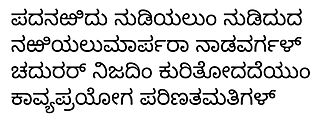 W
WThe Kannada script is an abugida of the Brahmic family, used primarily to write Kannada, one of the Dravidian languages of South India especially in the state of Karnataka. Kannada script is widely used for writing Sanskrit texts in Karnataka. Several minor languages, such as Tulu, Konkani, Kodava, Sanketi and Beary, also use alphabets based on the Kannada script. The Kannada and Telugu scripts share high mutual intellegibility with each other, and are often considered to be regional variants of single script. Other scripts similar to Kannada script are Sinhala script, and Old Peguan script (used in Burma).
 W
WKonkan is the rugged section of the mid-western coast of the Indian Subcontinent, the coastal hinterland of Konkan consists of numerous riverine islands, river valleys, and the hilly slopes of the Western Ghats, that lead up into the tablelands of the Deccan region. Geographically, Konkan is bound by the Arabian Sea to the west, the Deccan plateau to the east. The Konkan coast proceeds from the north at Damaon in the Gulf of Cambay, extends southwards all along the western seaside areas of Maharashtra and Goa, and meets the Canara coast at the northern edge of Karwar District in Karnataka. The best-known islands of Konkan, are Ilhas de Goa, the site of the capital city of Panjim and Salsette Island on which Bombay (Mumbai), the capital of Maharashtra is situated.
 W
WKonkani is an Indo-Aryan language spoken by the Konkani people, primarily along the western coastal region (Konkan) of India. It is one of the 22 Scheduled languages mentioned in the 8th schedule of the Indian Constitution and the official language of the Indian state of Goa. The first Konkani inscription is dated 1187 A.D. It is a minority language in Karnataka, Maharashtra, Kerala, Gujarat and Dadra and Nagar Haveli and Daman and Diu.
 W
WKonkani literature is literature in the Konkani language, mostly produced in three scripts: Roman, Devanagari and Kannada. Konkani literature is eligible for the Sahitya Akademi Award
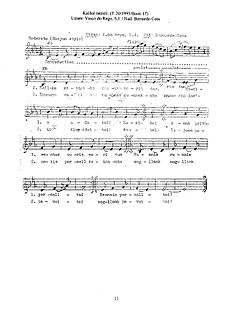 W
WKonkani liturgical music refers to the sacred music used in the liturgy in the Konkani language. Konkani is used in liturgy in the Archdiocese of Goa and Daman, and the dioceses of Mangalore, Karwar, Udupi and Sindhudurg.
 W
WThe Konkani language spoken in the Indian state of Goa has loanwords from multiple languages, including Arabic, Portuguese, English and Kannada. This is a list of loanwords in the Konkani language.
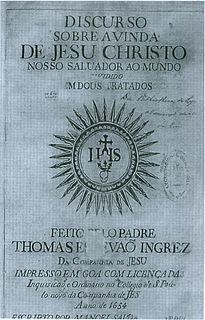 W
WKrista Purana is an epic poem on the life of Jesus Christ written in a mix of Marathi and Konkani by Fr.Thomas Stephens, S.J. (1549–1619). Adopting the literary form of the Hindu puranas, it retells the entire story of mankind from the creation days to the time of Jesus, in lyrical verse form. The Christian Puranas – 11,000 stanzas of 4 verses – were very popular in the churches of the area where they were sung on special occasions up to the 1930s. Although no copy of the original edition has yet been discovered, it is believed to have been published at Rachol (Raitur) in 1616, 1649, and 1654.
 W
WMaharashtri Konkani, or Konkan Marathi, is a group of Konkanic dialects spoken in the Konkan region. George Abraham Grierson, a British linguist of the colonial era referred to these dialects as the Konkan Standard of Marathi in order to differentiate it inside the Konkani language group.
 W
WKanara Catholic Association (KCA), is one of the reputed cultural organisations of the Mangalorean Catholic community in India.
 W
WMangalorean Catholics are an ethno-religious community of Catholics adhering to the Latin Rite of worship, from the Mangalore Diocese on the southwestern coast of Carnataca, India. They are Konkani people and speak the Konkani language.
 W
WMedia in Goa refers to the newspapers, magazines, radio stations, cable and television networks and online media in India's smallest state. Over the past two-and-half decades, the Goa-linked online media has also grown.
 W
WMangesh Vithal Nadkarni (1933–2007) was a professor of English literature, and a disciple of Sri Aurobindo. He lectured on Sri Aurobindo's philosophy and vision
 W
WJoaquim Heliodoro da Cunha Rivara was a Portuguese physician, professor, intellectual and politician. He excelled as a scholar of the history of the Portuguese presence in India and as a champion of the Konkani language.
 W
WThe Saraswat Brahmins are a Hindu Brahmin subcaste, who are spread from Kashmir in the North India to Konkan in the West India to Kanara and Kerala in South India. The word Saraswat is derived from the Rigvedic Sarasvati River.
 W
WShett is a name given to the Daivajnas of Konkani origin residing on the west coast of India. It is also an honorific title and a common surname used by them in Goa, Damaon, Coastal Maharashtra and Coastal Karnataka.
 W
WSt. Joseph Church, Belman is a Roman Catholic church and parish is located in Belmannu, Karkala taluk, Udupi district, Karnataka, India. Formerly part of the Diocese of Mangalore, it became part of the Diocese of Udupi after Udupi became a separate diocese on 15 October 2011. The parish is part of the Archdiocese of Bangalore. It observes the Latin rite, with mass celebrated in Konkani.
 W
WSunaparant was a Konkani newspaper in Devanagari script. Based in Goa, India, it operated from 1987 to 2015. It published a special magazine during the Ganesh Chaturthi annual festival. Sunaparant was started on 13 May 1987, after Konkani was made the official language on 4 February that year, after a prolonged struggle by Goans.
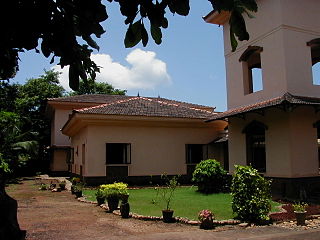 W
WThomas Stephens Konknni Kendr (TSKK) is a Jesuit research-institute working on issues related to the Konkani language, literature, culture and education. It is based in Alto Porvorim, on the outskirts of the state capital of Goa, India.
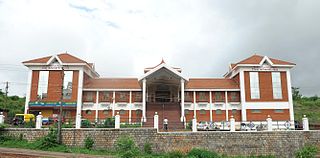 W
WWorld Konkani Centre was founded by Konkani Bhas Ani Sanskriti Prathistan at Konkani Gaon, Shakti Nagar, Mangalore, to serve as a nodal agency for the preservation and overall development of Konkani language, art and culture involving all the Konkani people the world over.